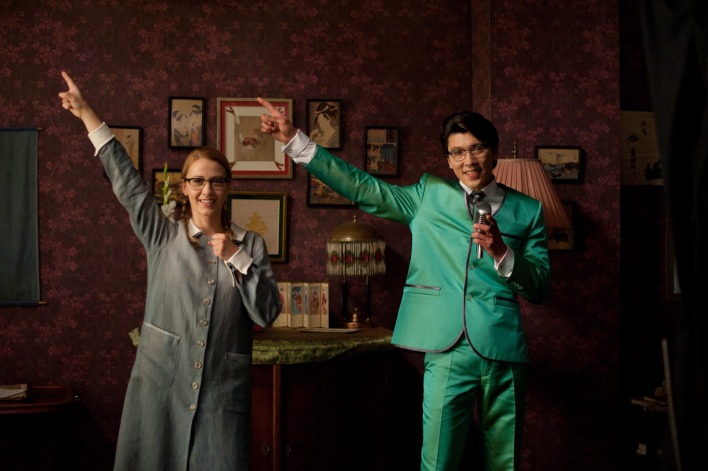The dropping of artistic traditions inherited from the age of socialism resulted in the same sort of fascinating and unique renewal of film language for Hungarian films as in other countries of Europe that shared our history. This is apparent in the diversity and soaring creativity of the ever-increasing number of works made over the years, bringing more recently new Oscars and widespread international admiration. The research and mapping of documents from our contemporary film art enjoys the same priority as film products of earlier days since together these represent the Hungarian film heritage.
We retain the material and written documentation of nearly 580 feature films created in Hungary or produced in Hungarian co-productions (or those in foreign majority production but rated as Hungaricums) that have been made in the years since 1989. Films from the past years have enjoyed countless premier festival triumphs, from János Szász’s Crystal Globe and László Nemes-Jeles’s Oscar to Ildikó Enyedi’s Golden Bear prize, to mention just the most impressive. Following restructuring of the financing of the film profession in 2011, the average annual number of 20 feature films halved in the transitional years (2010-2012), but under the aegis of the Filmalap (Film Fund), by the end of 2017 this should be back to the earlier figure, and may even exceed it.
The archive not only collects feature films made with state sponsorship. We also pay particular attention to preserving for posterity copies of feature films made and screened under sponsorship agreements, with private funding and local community financing. This is important because in the past two years, between one-third to a half of all features were produced outside official film financing frameworks. However, our collection still has many gaps with regard to films made from private means. One of the main reasons for this is a misinterpretation of government decree 1998/60 on the provision of legal deposits, which forms the basis of our collecting efforts. Many do not realize that every film screened and/or made in Hungary or with Hungarian participation must be archived, not solely those works financed through tenders. In the case of damaged or lost copies, the authors of a film have only this institution to turn to for assistance, but only when the owner actually made a legal deposit of the film in the first place. It is our experience going back six decades that access is guaranteed only for those films of which we hold an archived copy in our vaults.
Archiving of new-production feature films is not restricted to the collection of reproduction source materials and copies. For the processing and researching of films (furthermore, for later international retrospectives and future restorations), we request and make available preview materials, screenplays, dialogue lists, film posters and film photos. Copies of reviews and articles on feature films up to 2010 are available in our dossier archive; for anything from 2011 on, these are accessible electronically on the research platform of our database (as well as on filmography data and documents). We are working on digitizing the library material retrospectively.
The feature film section also handles the collection of fictional TV films and TV film series, which is somewhat deficient for the first half of the period after the collapse of socialism. The reason is that aside from those sponsored by the Hungarian Film Fund, principals did not provide archive deposits, instead placing copies only in the TV archives. Thanks to a ruling of the National Film Office in 2004, and the new accounting system of MTVA launching in 2012, the archiving of these genres has also been resolved. From 2005, our collection is endowed with an average 12-15 new production TV films and TV film series each year.

Liza, the Fox-Fairy






